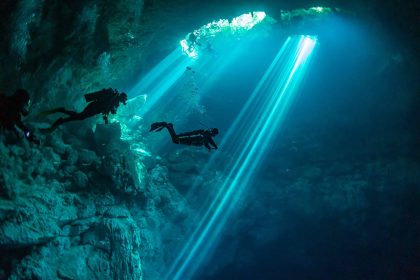Tired of classic team sports where competition overshadows collaboration? Discover kin-ball, this Quebec sport where three teams face each other around a giant 1.22 m ball. Invented in 1986 by Mario Demers, this team sport shakes up traditional rules: it’s impossible to shine solo, every hit requires all players to be in contact with the ball. This guide also reveals why a simple shout – “Omnikin!” – triggers a unique dynamic, where every mistake benefits two opponents, celebrating a 100% inclusive and spectacular team spirit.
What is kin-ball? A one-of-a-kind team sport
The essentials of kin-ball in 3 key points
Imagine a sport where three teams compete at once, where the ball is over a metre wide, and cooperation is mandatory. Kin-ball defies the traditional rules of team sports. This game, accessible to everyone, combines strategy, reactivity, and team spirit in an unprecedented format.
Three teams on the field: Unlike classic sports, kin-ball brings together three teams of four players simultaneously, each identified by a colour (black, grey, blue). This format creates a dynamic balance between cooperation and competition.
A giant ball: The iconic kin-ball measures 1.22 metres in diameter and weighs 1 kg. Its impressive size and light weight allow spectacular yet safe movements.
Cooperation above all: To hit the ball, all members of the attacking team must be in physical contact with it. This rule enforces constant coordination between players.
The history of kin-ball: a Quebec invention for everyone
In 1986, Mario Demers, a physical education teacher in Quebec, revolutionised team sports by creating kin-ball. His goal? To offer an activity where cooperation and respect replace individualism. Born in a school setting, this sport quickly established itself as an innovative educational tool.
Today, 3.8 million players in over 40 countries continue this philosophy. International competitions, such as the world championships where Canada and Japan dominate, show how among unusual sports, kin-ball has found its place. Its success lies in its accessibility: children, seniors, and people with disabilities can all play thanks to rules designed for inclusion.
Game rules to start well in kin-ball
Equipment and field: simplicity and specificity
Kin-ball is played with a giant ball 1.22 metres in diameter and weighing 1 kilogram, made of light foam for easy handling. This ball, available in black, grey, blue (or pink in some school contexts), is the central element of the game. Three teams of four players each compete on a 20×20 metre square field, usually indoors (gymnasium) on a flat, non-slippery surface. The field lines are included in the total dimensions, allowing fast movements and fluid play. Each team wears bibs of distinct colours (black, grey, blue), making team recognition easy during complex play phases.
How an action unfolds: attack, defend and score points
The attacking team (the one in possession of the ball) consists of three players supporting the ball with their hands and a fourth player, the server, who will hit it. Before striking, the server must shout “Omnikin!” followed by the colour of an opposing team (e.g., “Omnikin! Black!”). The hit is made with a body part above the hips, and the three players must touch the ball at the moment of impact. The designated defensive team must catch the ball before it touches the ground. If successful, it becomes the attacking team. If it fails, the other two teams each score 1 point — a system that encourages caution but also active competition. The ball’s trajectory must be ascending or horizontal and cover at least 1.8 metres after the hit to avoid fouls.
Common fouls to avoid
- Letting the ball touch the ground or hitting it outside the field limits.
- Forgetting to announce “Omnikin!” or calling a non-existent team (e.g., a colour not in play).
- Giving a downward trajectory or failing to respect the minimum 1.8-metre distance after hitting.
- Walking with the ball after starting the offensive action.
- Not having all players in contact with the ball at the moment of the hit.
Each foul automatically benefits the other two teams, which demands extreme tactical precision. For example, a team designated for defence must anticipate the ball’s movements over a large area while avoiding being caught off guard by fast hits. This unique dynamic, where two teams gain from one’s mistake, makes kin-ball both strategic and unpredictable. Players must combine reflexes, communication, and anticipation to dominate on a field where the slightest inattention costs dearly.
More than a sport: the values and benefits of kin-ball
Cooperation, teamwork and fair play at the heart of the game
Kin-ball is designed to promote unique principles. Unlike traditional sports, all team members must touch the ball during an attack. This system ensures everyone participates actively, eliminating dependence on a “superstar.”
The scoring system reinforces team spirit: in case of a foul, the other two teams score a point. This encourages collective caution, as one mistake benefits two opponents. This rule maintains balance between teams of different levels.
A sport accessible and beneficial to all
Suitable for all ages and physical abilities, kin-ball stands out for its giant ball (1.2 metres, 1 kg) and the absence of violent contact. This makes it an inclusive sport, even for people with disabilities. Studies show it improves coordination, speed, and endurance in players.
Physical benefits include intense cardiovascular work, while social aspects strengthen communication and collective decision-making. By eliminating the stereotypes of traditional sports, kin-ball attracts groups usually reluctant to play, such as shy children or less athletic adults.
Practised in 40+ countries by 3.8 million people, this sport easily integrates into schools, leisure centres, or disabled sports associations. Its accessibility and respect-based values make it an ideal activity to promote inclusion and overall well-being.
Kin-ball in competition: an international dimension
Global development and federations
Kin-ball, regulated by the International Kin-Ball Federation (FIKB), is a team sport played by over 3.8 million people in several countries, including Canada, Japan, Belgium, France, Spain, the Czech Republic, South Korea, and Malaysia. The FIKB sets official rules, validates competition equipment, and can sanction teams for non-compliance. Originating in Quebec in 1986, it spread thanks to its cooperative values and accessibility. The first World Cup in 2001 brought together three countries, compared to eleven in the 2015 edition, illustrating its international growth. Despite its global success, it is not yet an Olympic sport, but its competitive structure remains strong.
Men’s World Championship Results
| Year | Gold Medal | Silver Medal | Bronze Medal |
|---|---|---|---|
| 2011 | Canada | Japan | France |
| 2013 | Canada | Japan | Belgium |
| 2015 | Japan | France | Czech Republic |
| 2017 | Canada | Japan | Czech Republic |
| 2019 | Canada | France | Japan |
| 2024 | Japan | Canada | Belgium |
The table shows Canadian dominance until 2019, with five world titles. Japan triumphed in 2015 and 2024, competing with European teams like Belgium and the Czech Republic. France often reached the podium, earning bronze in 2011 and 2019. The 2019 World Cup in France, held in Les Ponts-de-Cé, gathered nations from four continents, highlighting kin-ball’s appeal. This sport, now established in Asia, North America, and Europe, continues to seek Olympic recognition despite its popularity.
Getting started with kin-ball: a practical guide for children and schools
Adapting the rules for fun and educational practice
Kin-ball fits easily into school settings through simple adjustments. For younger players (ages 8–11), simplify the “Omnikin + colour” call to just shouting the colour. Reduce the field to 15m x 15m and play shorter rounds (5–7 minutes) to maintain engagement.
Use adapted balls: a junior model of 84 cm in diameter suits younger players, with the option to use a smaller ball (46 cm) for targeted exercises. Emphasise cooperation (everyone touches the ball), listening (sound signals), and communication (strategy). These adaptations make the game accessible from age 8–9 while preparing players for official rules.
A few fun beginner exercises
To familiarise children with the technical gestures, here are some educational activities:
The transporter game: In groups of 4, children move the ball from point A to B while holding it with three hands. This exercise reinforces coordination and cooperation.
The ten-pass game (kin-ball version): Two teams exchange passes by hitting the ball, while the third tries to intercept. This exercise develops concentration and reflexes.
The clock: A central team passes the ball to another designated by colour. The receiving team must control and return effectively, working on strategy.
The leader’s shout: An instructor or child announces a colour. The corresponding team must react quickly to touch the ball. This exercise improves reaction and stress management.
These activities, combined with a smaller field and adapted balls (84 cm diameter), allow children to master the basics before playing the full version. The ball’s structure (nylon shell and rubber bladder) ensures safety and durability for regular school or club practice.
Ready to dive into the kin-ball adventure?
How to find a club and start playing
Want to try kin-ball? Nothing easier! In France, many clubs welcome beginners. Type “kin-ball club + [your city name]” to find nearby facilities. In Lyon, training takes place at Maurice Scève Gym (Monday 6:30–8 p.m.). In Sainte-Luce-sur-Loire, the club offers sessions for youth and adults (Tuesday 6–9:30 p.m.). Need equipment? No worries: balls, bibs, and other gear are always provided by the club.
A sport to try right no
Kin-ball perfectly combines spectacle and cooperation. With its 1.2-metre giant ball, this sport gathers three teams of four players. The goal? Score points by sending the ball toward an opposing team while shouting “Omnikin!”. If the targeted team fails, it loses points… but the other two gain them! Accessible from age 8, it promotes team spirit, reactivity, and inclusion. So, ready for a unique sporting experience? Join a club and discover a sport where every player truly counts!
Kin-ball, originating from Quebec (1986), stands out with its giant ball, three simultaneous teams, and cooperation. Promoting collective effort and human values, this accessible sport combines fun and originality. Ready to give it a try? Join a club near you!






